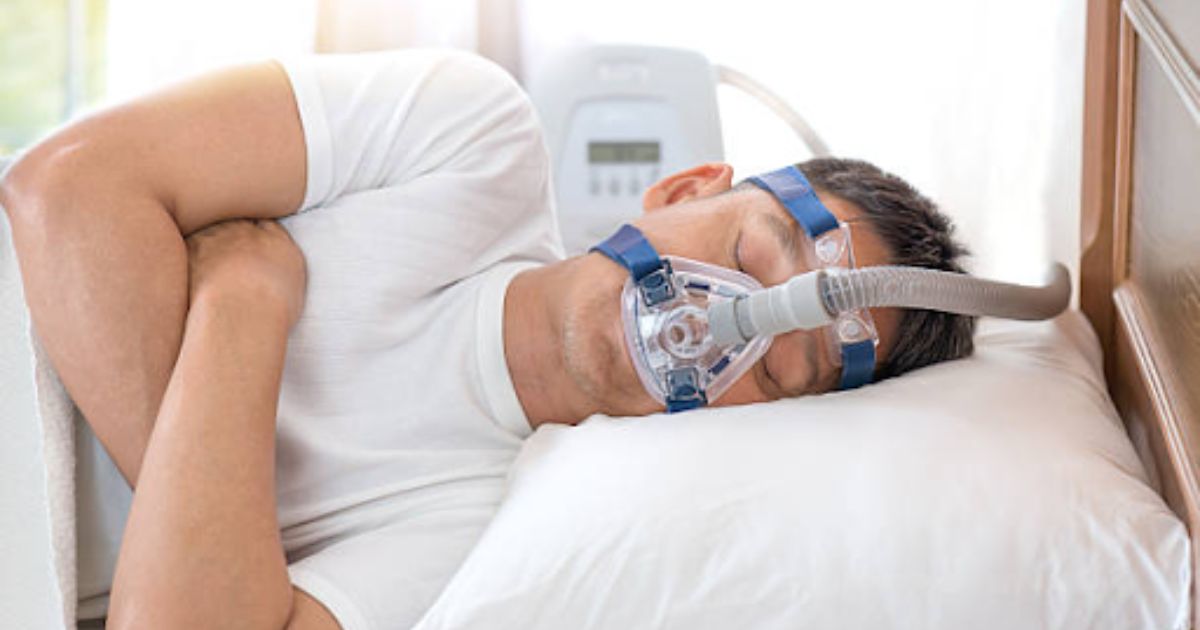Sleep apnea is more than just a snore-filled night; it’s a serious condition that can wreak havoc on your health and daily life. From daytime fatigue to an increased risk of heart disease, the effects of sleep apnea are far-reaching. The good news? You can take control and alleviate many of these symptoms with a few targeted lifestyle changes. If you’re tired of restless nights and groggy mornings, read on to discover five effective strategies to ease sleep apnea symptoms and reclaim your restful nights.
Maintain a Healthy Weight
Maintaining a healthy weight is crucial for managing sleep apnea symptoms. Excess weight, especially around the neck, can obstruct the airway and lead to breathing difficulties during sleep. This obstruction leads to frequent awakenings, reduced sleep quality, and increased stress on the heart and lungs.
Losing weight can reduce these tissues and the severity of sleep apnea symptoms, leading to better sleep and overall health improvements.

Steps to Achieve a Healthy Weight
- Balanced Diet: Incorporate a balanced diet with plenty of fruits, vegetables, whole grains, and lean proteins. Avoid high-calorie, low-nutrient foods that contribute to weight gain. Focus on nutrient-dense foods that provide essential vitamins and minerals without adding extra calories.
- Regular Exercise: Engage in regular physical activity. Aim for at least 150 minutes of moderate exercise per week. Activities such as walking, jogging, cycling, and swimming can help you maintain a healthy weight and improve your cardiovascular health.
- Stay Hydrated: Drink plenty of water throughout the day. Sometimes, thirst can be mistaken for hunger, leading to unnecessary snacking.
- Seek Professional Help: Consider consulting a dietitian or nutritionist for personalized advice and meal planning. They can help you create a sustainable and enjoyable eating plan.
Adopt a Regular Sleep Schedule
A regular sleep schedule helps regulate your body’s internal clock, leading to better sleep quality and reduced sleep apnea symptoms. Consistency in your sleep habits can make a significant difference in how well you sleep and how you feel during the day.
Importance of Consistency
Going to bed and waking up at the same time every day helps stabilize your circadian rhythm, making it easier to fall asleep and stay asleep through the night. A stable circadian rhythm promotes deeper and more restorative sleep, which is essential for managing sleep apnea symptoms.
Tips for a Consistent Sleep Schedule
- Set a Bedtime: Go to bed and wake up at the same time every day, even on weekends. This practice helps your body recognize when it’s time to sleep and wake up.
- Create a Bedtime Routine: Develop a calming pre-sleep routine, such as reading a book, taking a warm bath, or practicing relaxation techniques like deep breathing or meditation.
- Limit Screen Time Before Bed: Avoid screens from TVs, computers, and smartphones at least an hour before bedtime. The blue light emitted by screens can interfere with your body’s production of melatonin, a hormone that regulates sleep.

Enhance Your Sleep Environment
- Comfortable Mattress and Pillows: Invest in a comfortable mattress and pillows that support your preferred sleep position. A good mattress can make a significant difference in your sleep quality.
- Dark, Quiet, and Cool Room: Ensure your bedroom is conducive to sleep by keeping it dark, quiet, and cool. Use blackout curtains, earplugs, or a white noise machine if necessary.
- Limit Caffeine and Heavy Meals: Avoid caffeine and heavy meals close to bedtime. Both can disrupt your sleep patterns and make it harder to fall asleep.
Change Your Sleep Position
Sleeping on your back is a bad move for people struggling with sleep apnea symptoms, because doing so can cause your tongue and soft tissues to collapse to the back of your throat and obstruct the airway. Instead, people should switch to side-sleeping. Side-sleeping keeps the airway open and reduces the risk of blockage. Elevating the head of your bed by a few inches can also help keep the airway open.
Techniques to Stay on Your Side
- Pillow Support: Use pillows to prop yourself on your side. A full-body pillow or strategically placed pillows can help you maintain a side-sleeping position throughout the night.
- Positional Therapy Devices: Special devices, such as a sleep positioner or wearable devices, can help keep you in a side-sleeping position. These devices are designed to make it uncomfortable to sleep on your back, encouraging you to stay on your side.
- Elevate Your Head: Raising the head of your bed by a few inches can help reduce airway obstruction. Use a wedge pillow or adjustable bed to achieve this position.
Avoid Alcohol and Smoking
Both alcohol and smoking can exacerbate sleep apnea symptoms. Alcohol relaxes the muscles in your throat, leading to airway obstruction, while smoking increases inflammation and fluid retention in the airway.
Alcohol consumption can relax the throat muscles excessively, making it easier for the airway to collapse during sleep. Smoking causes inflammation and swelling in the airway, further restricting airflow. Both habits can lead to more severe and frequent sleep apnea episodes.
Steps to Reduce or Eliminate Alcohol and Smoking
- Limit Alcohol Intake: Avoid alcohol at least 4 hours before bedtime. If you drink, do so in moderation and be mindful of its effects on your sleep.
- Quit Smoking: Seek support through smoking cessation programs, nicotine replacement therapy, or counseling. Quitting smoking can significantly improve your respiratory health and reduce sleep apnea symptoms.
- Find Healthy Alternatives: Replace smoking and drinking with healthier habits, such as exercise, hobbies, or spending time with friends and family.
- Manage Stress: Stress can trigger smoking and drinking habits. Practice stress management techniques like yoga, meditation, or deep breathing exercises.
Incorporate Exercise into Your Routine
Regular exercise can help alleviate sleep apnea symptoms by reducing weight and improving respiratory function. Physical activity is beneficial for your overall health and can make a significant difference in your sleep quality.
Exercise not only helps in weight management but also strengthens the cardiovascular system, which can improve breathing patterns and reduce sleep apnea events. Regular physical activity can also help reduce stress and anxiety, which are often linked to sleep disturbances.
Types of Exercise to Consider
- Cardio Workouts: Activities such as walking, running, and cycling are excellent choices. These exercises help improve cardiovascular health and promote weight loss.
- Strength Training: Building muscle can boost your metabolism and aid in weight loss. Incorporate strength training exercises like weightlifting, resistance band exercises, or bodyweight workouts into your routine.
- Flexibility and Relaxation Exercises: Activities like yoga and Pilates can improve flexibility, reduce stress, and enhance relaxation. These exercises can also help improve breathing and posture.

Conclusion
Taking charge of your sleep health is essential for managing sleep apnea symptoms and enhancing your overall quality of life. By following the five tips we’ve discussed, you can make significant strides in improving your sleep. However, for those more persistent cases of sleep apnea, professional help is often necessary. Jacksonville Sleep Center is your go-to resource for diagnosing and treating sleep disorders, including sleep apnea. If you’re struggling with persistent sleep apnea symptoms, don’t wait any longer.
Take Action Today
Reach out to Jacksonville Sleep Center and take the first step toward a restful night’s sleep and a healthier, more vibrant life. Contact us now to schedule your consultation and discover how our specialized treatments can help you reclaim your sleep and well-being.






